Lines before dawn, violence and ‘No Trust’: China’s healthcare crisis
The major gaps and inequalities threaten to undermine China’s progress, social stability and financial health — creating a serious challenge for President Xi Jinping and the Communist Party.

Dr Ye Minghao, a family practitioner in Shanghai, sees up to 80 patients a day. He enjoys his work, he said, but is unhappy about the lack of respect for his field. (Source: New York Times)
Well before dawn, nearly 100 people stood in line outside one of the capital’s top hospitals.
They were hoping to get an appointment with a specialist, a chance for access to the best health care in the country. Scalpers hawked medical visits for a fee, ignoring repeated crackdowns by the government.
3m 22s

How Google Glass Could Transform Doctor's Visits
Google Glass may be coming to your surgery soon. Could wearable tech help medical professionals give patients more attention and ultimately better medical care?
A Beijing resident in line was trying to get his father in to see a neurologist. A senior lawmaker from Liaoning, a northeastern province, needed a second opinion on her daughter’s blood disorder.
Mao Ning, who was helping her friend get an appointment with a dermatologist, arrived at 4 a.m. She was in the middle of the line.
“There’s no choice — everyone comes to Beijing,” Mao, 40, said. “I think this is an unscientific approach and is not in keeping with our national conditions. We shouldn’t have people do this, right? There should be a reasonable system.”
The long lines, a standard feature of hospital visits in China, are a symptom of a health care system in crisis.
An economic boom over the past three decades has transformed China from a poor farming nation to the world’s second-largest economy. The cradle-to-grave system of socialized medicine has improved life expectancy and lowered maternal mortality rates.
But the system cannot adequately support China’s population of more than 1 billion people. The major gaps and inequalities threaten to undermine China’s progress, social stability and financial health — creating a serious challenge for President Xi Jinping and the Communist Party.
The country does not have a functioning primary care system, the first line of defence for illness and injury. China has one general practitioner for every 6,666 people, compared with the international standard of one for every 1,500 to 2,000 people, according to the World Health Organization.
Instead of going to a doctor’s office or a community clinic, people rush to the hospitals to see specialists, even for fevers and headaches.
Hospitals are understaffed and overwhelmed. Specialists are overworked, seeing as many as 200 patients a day.
And people are frustrated, with some resorting to violence. In China, attacks on doctors are so common that they have a name: “yi nao,” or “medical disturbance.”
Mao Qun’an, the spokesman for the National Health and Family Planning Commission, acknowledged that the hospitals could no longer meet the public’s needs.
“If you don’t get the grassroots right, then the medical problems in China cannot be solved,” Mao said. “So what we’re doing now is trying to return to the normal state.”
A Lack of Respect
On some mornings, Dr Huang Dazhi, a general practitioner in Shanghai, rides his motorbike to a nursing home, where he treats about 40 patients a week. During lunchtime, he sprints back to his clinic to stock up on their medication and then heads back to the nursing home.
Afterward, he makes house calls to three or four people. On other days, he goes to his clinic, where he sees about 70 patients. At night, he doles out advice about high-blood-pressure medications and colds to his patients, who call him on his mobile phone.
For all this, Huang is paid about $1,340 a month — roughly the same he was making starting out as a specialist in internal medicine 12 years ago.
“The social status of a general practitioner is not high enough,” Huang said. “It feels like there’s still a large gap when you compare us to specialists.”
In a country where pay is equated with respect, the public views family doctors as having a lower status and weaker credentials than specialists.
“There is no trust in the primary care system among the population because the good doctors don’t go there,” said Bernhard Schwartländer, a senior aide at the World Health Organization and its former representative to China. “They cannot make money.”
China once had a broad, if somewhat basic, primary health care system. “Barefoot doctors” roamed the countryside treating minor ailments. In the cities, people got their health care at clinics run by state-owned companies.
China’s “barefoot doctor” system was one of the Communist revolution’s most notable successes. In 1965, Chairman Mao Zedong, troubled by the lack of health care in the countryside, envisioned an army of people who spent half their time farming (many worked in the fields without shoes) and half their time treating patients. They weren’t doctors, but rather a sort of health care SWAT team. The authorities gave them a short training period — several months to a year — and a bag of limited medicine and equipment.
Average life expectancy in China increased to 63 years in 1970 from 44 in 1960, according to Theodore H. Tulchinsky and Elena A. Varavikova, authors of “The New Public Health,” a book about global medical care. The maternal mortality rate in rural China fell to 41.3 per 100,000 people from 150 per 100,000 before 1949, according to a 2008 article published by the World Health Organization. In the same period, the infant mortality rate fell to 18.6 per 1,000 from 200.
But the public was fed up that it could not get medical treatment whenever or wherever it wanted. People needed a referral to see a specialist in a hospital.
In the mid-1980s, the government lifted the barriers, allowing people to be treated in hospitals. At the same time, China began an economic overhaul that led to the dismantling of the entire system. Government subsidies were cut drastically, and hospitals had to come up with ways to generate profits.
As hospitals started investing in high-tech machines and expanded to meet their new financial needs, medical students were drawn to them. Many believed that being a specialist would guarantee them an “iron rice bowl,” a job that was secure with an extensive safety net that included housing and a pension.
Huang initially followed the more lucrative path. After graduating from medical school in 2006, he started working as an internist in a hospital in Shanghai.
But he kept seeing patients with simple aftercare needs like removing stitches, changing catheters and switching medication. “These things really should not be done by us specialists,” he said.
As a boy, he had followed his aunt as she went to people’s homes to deliver babies and give injections. “After becoming a doctor, I’ve realized that the people’s needs for ‘barefoot doctors’ is still very much in demand,” he said.
Corruption and Backlash
In March, a doctor was killed by his patient’s husband. In November 2016, a man attacked a doctor after an argument over his daughter’s treatment. The month before, a father stabbed a pediatrician 15 times after his daughter died shortly after her birth. The doctor did not survive.
Dr Zhao Lizhong, an emergency room doctor in Beijing, was sitting at a computer when Lu Fu’ke plunged a knife into his neck in April 2012.
Hours earlier, Lu had stabbed Dr Xing Zhimin, who had treated him for rhinitis, in the Peking University People’s Hospital and fled. Police arrested him later that month. Lu was sentenced to 13 years in jail.
The root of the violence is all the same: a mistrust of the medical system.
It goes back to the market reforms under Deng Xiaoping in the 1980s. After the government cut back subsidies to hospitals, doctors were forced to find ways to make money. Many accepted kickbacks from drug companies and gifts from patients.
The corruption is endemic. GlaxoSmithKline paid a $500 million fine in 2014, the highest ever in China at the time, for giving kickbacks to doctors and hospitals that prescribed its medicines. Eli Lilly, Pfizer and other global drug giants have settled with regulators over similar behaviour.
On the Front Line
To help change the culture, China is pushing each household to sign a contract with a family doctor by 2020 and subsidizing patients’ visits. General practitioners will also have the authority to make appointments directly with top specialists, rather than leaving patients to make their own at hospitals.
After the government’s directive, Dr Yang Lan has signed up more than 200 patients, and monitors their health for about $1,220 a month.
Yang, 31, said her practice was largely free of grumpy patients and, as a result, “yi nao.” She sees 50-60 patients in a workday of about 7 1/2 hours. In the United States, a family doctor has 83 “patient encounters” in a 45-hour workweek, according to a 2017 survey by the American Academy of Family Physicians. That’s about 16 patients in a nine-hour workday.
The patients get something, too — a doctor who has time for them. Every three months, Yang has a face-to-face meeting with her patients, either during a house call or at her clinic. She’s available to dispense round-the-clock advice to her patients on WeChat, a popular messaging app in China. A patient is generally kept in the waiting room for a brief period and, if necessary, gets to talk with her for at least 15 minutes.





 Nurses reviewing the patient list at the Gaoqiao community health service center in Shanghai. Hoping to get more people to use local clinics instead of hospitals, the government is paying specialists subsidies to staff them. (Source: New York Times)
Nurses reviewing the patient list at the Gaoqiao community health service center in Shanghai. Hoping to get more people to use local clinics instead of hospitals, the government is paying specialists subsidies to staff them. (Source: New York Times)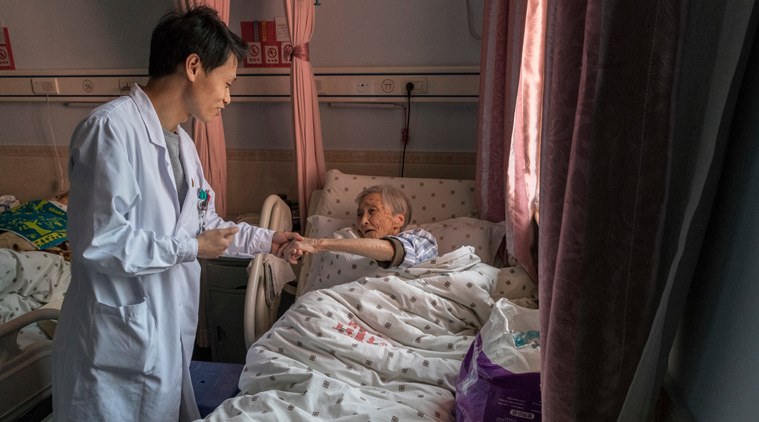 Dr Huang Dazhi, a general practitioner in Shanghai, is paid about $1,340 a month — roughly his starting pay as a specialist 12 years ago. (Source: New York Times)
Dr Huang Dazhi, a general practitioner in Shanghai, is paid about $1,340 a month — roughly his starting pay as a specialist 12 years ago. (Source: New York Times)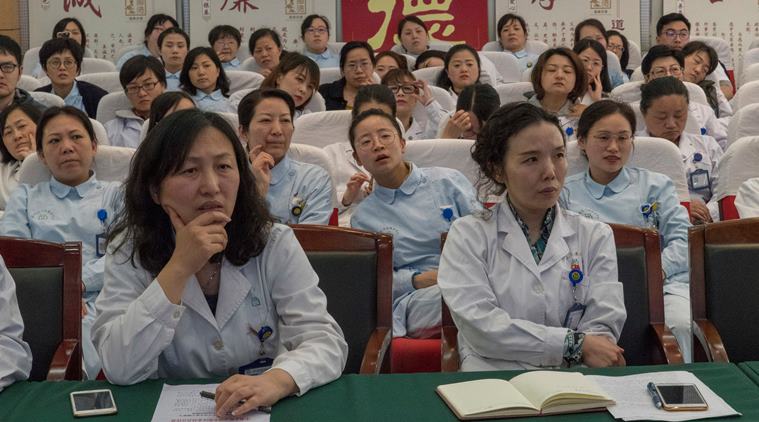 A training session for family doctors at the Weifang community health service center in Shanghai. (Source: New York Times)
A training session for family doctors at the Weifang community health service center in Shanghai. (Source: New York Times)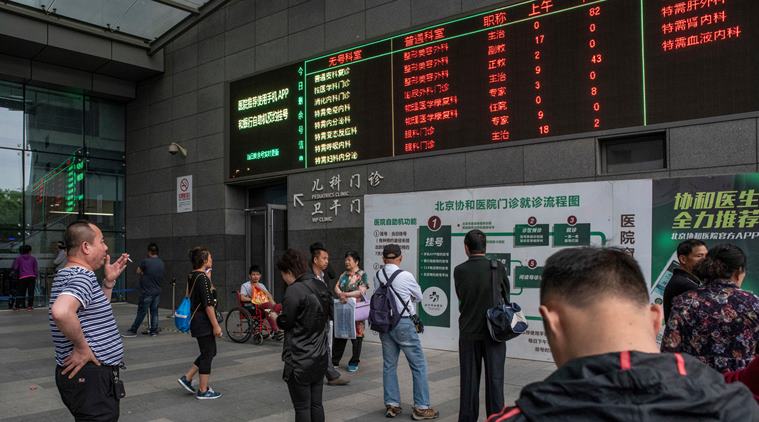 An electronic board at the entrance of Peking Union Hospital displays the number of doctors available and their speciality. (Source: New York Times)
An electronic board at the entrance of Peking Union Hospital displays the number of doctors available and their speciality. (Source: New York Times)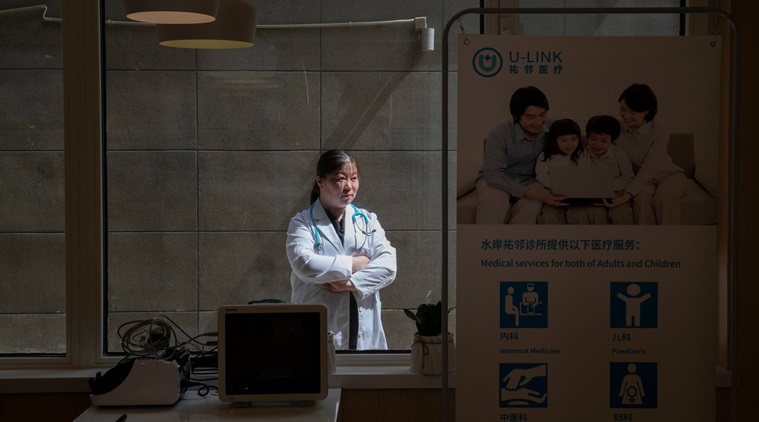 Dr. Yu Ying, who worked in Peking Union Hospital’s emergency room, said she had heard accounts of doctors who accepted thousands of dollars in kickbacks. (Source: New York TImes)
Dr. Yu Ying, who worked in Peking Union Hospital’s emergency room, said she had heard accounts of doctors who accepted thousands of dollars in kickbacks. (Source: New York TImes)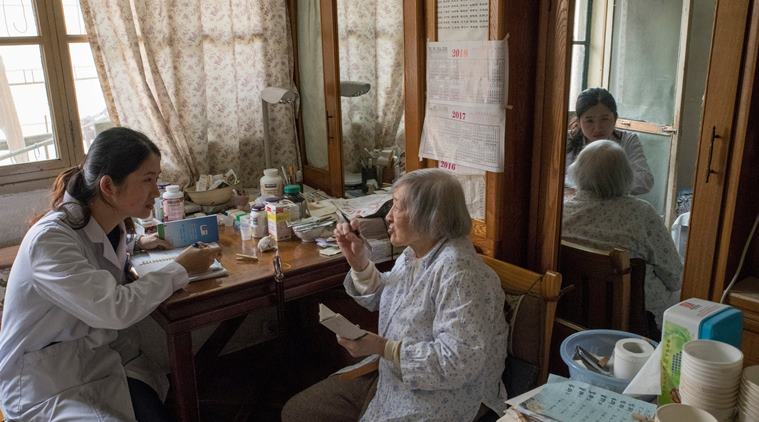 Dr. Zhu Min, who practices family medicine in Shanghai, splits her time between the local clinic, a hospital and patients’ homes. (Source: New York Times)
Dr. Zhu Min, who practices family medicine in Shanghai, splits her time between the local clinic, a hospital and patients’ homes. (Source: New York Times)
























.png)









No hay comentarios:
Publicar un comentario